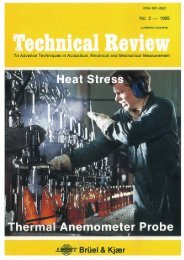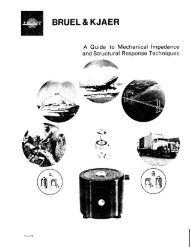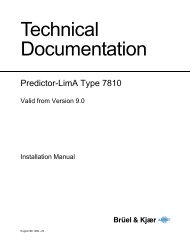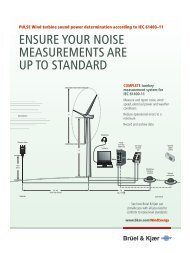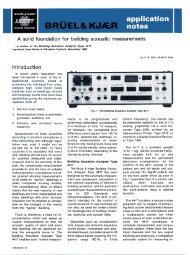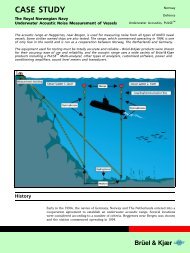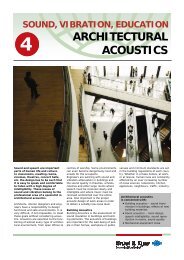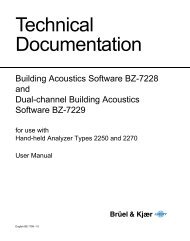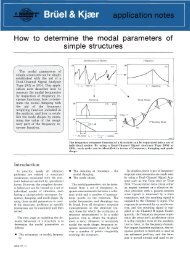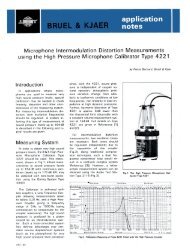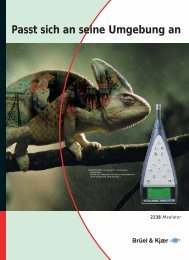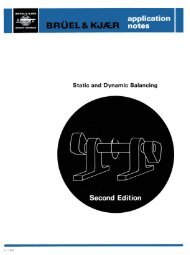Thyristors in Railway Traction How can their effects be measured?
Thyristors in Railway Traction How can their effects be measured?
Thyristors in Railway Traction How can their effects be measured?
Create successful ePaper yourself
Turn your PDF publications into a flip-book with our unique Google optimized e-Paper software.
Log the tape<br />
record<strong>in</strong>gs<br />
A tape recorder always records <strong>in</strong><br />
real time, and a sensible and systematic<br />
commission<strong>in</strong>g team who record<br />
all the tests they carry out, on<br />
the test-<strong>be</strong>d and on the track, will<br />
end up with a lot of tape. To rema<strong>in</strong><br />
useful over a period of months or years,<br />
this tape must <strong>be</strong> systematically<br />
logged — and on the basis<br />
that one picture is worth a thousand<br />
words, it is much more useful<br />
to produce a sequence of plots of<br />
what is go<strong>in</strong>g on on each tape, than<br />
to write out a long description on<br />
the tape box.<br />
Briiel & Kjaer manufacture graphic<br />
hard-copy units for both of the<br />
pr<strong>in</strong>cipal duties likely to <strong>be</strong> encountered<br />
<strong>in</strong> this k<strong>in</strong>d of work. For timevary<strong>in</strong>g<br />
functions such as traction<br />
current, tra<strong>in</strong> speed, and psophometric<br />
current, three level recorders<br />
are available, Types 2306, 2307<br />
and 2309. For plott<strong>in</strong>g two related<br />
variables such as harmonic amplitude<br />
aga<strong>in</strong>st harmonic frequency, or<br />
. . Extracts from tape record<strong>in</strong>g of thyristor locomotive trial, logged us<strong>in</strong>g a Type 2307 Level Repsophometric<br />
current aga<strong>in</strong>st corder. The upper trace records RMS pantograph current over a period of about 2 m<strong>in</strong>utes, and<br />
Speed, an X-Y recorder, lype ^oUo, the lower trace records current <strong>in</strong> one armature dur<strong>in</strong>g the same period. Note the application of<br />
is available. The latter is also <strong>be</strong>tter electric rheostattc brak<strong>in</strong>g (zero pantograph current) at the end of the record<br />
(<strong>be</strong>cause of its paper size) for mak<strong>in</strong>g<br />
permanent records of time-waveforms,<br />
for subsequent comparison. the tra<strong>in</strong>, these pulses may <strong>be</strong> used Type 2306:<br />
To some extent, of course, either to regulate the paper throw <strong>in</strong> pro- * Fully portable battery operation,<br />
k<strong>in</strong>d of <strong>in</strong>strument <strong>can</strong> <strong>be</strong> used for portion to distance travelled along from built-<strong>in</strong> dry or rechargeable<br />
both purposes. the track, <strong>in</strong>stead of logg<strong>in</strong>g the sig- NiCd cells, or operation from senal<br />
at a uniform time rate. parate ma<strong>in</strong>s supply such as<br />
The advantage of the B&K level Type 2808 or 6—12V DC<br />
recorders is that they may <strong>be</strong> used All the B&K level recorders write 500mA max.<br />
for record<strong>in</strong>g DC or AC signals, with disposable fibre pens on cont<strong>in</strong>- * Weight only 3,5 kg (7,7 lb), dis<strong>in</strong>ce<br />
they all <strong>in</strong>corporate true RMS uous calibrated paper from a roll. mensions only 180 x 245 x<br />
detectors to convert an <strong>in</strong>com<strong>in</strong>g The Types 2306 and 2307 also of- 1 10 mm (7,1 x 9,6 x 4,3 <strong>in</strong>)<br />
AC signal <strong>in</strong>to a pen deflection. The fer the option of writ<strong>in</strong>g with sap- * Built-<strong>in</strong> meter to monitor supply<br />
2307 also has peak and average de- phire styli on wax-coated paper. condition<br />
tectors as alternatives. All recorders These techniques result <strong>in</strong> high-con- * 8 fixed paper speeds 0,01 to<br />
also provide for logarithmic record- trast, <strong>in</strong>stantaneous records requir- 30 mm/s, plus external TTL<br />
<strong>in</strong>g to give constant resolution over <strong>in</strong>g no subsequent process<strong>in</strong>g. pulse tra<strong>in</strong> or voltage ramp (usthe<br />
whole dynamic range. If l<strong>in</strong>ear Other features of the recorders are <strong>in</strong>g Type WB 0228 paper drive<br />
record<strong>in</strong>g is required of AC signals set out <strong>be</strong>low. unit)<br />
(such as traction current on AC e l e c - * 4 writ<strong>in</strong>g speeds 1 6 mm/s to<br />
trified equipment), it is necessary t o 2 5 0 mm/s<br />
use an external measur<strong>in</strong>g i n s t r u - * Can <strong>in</strong>terface with Type 4426<br />
ment (such as the psophometer i n N o i s e Level Analyzer for, e.g. staits<br />
unweighted mode) <strong>in</strong> c o n j u n c - t i s t i c a l analysis of telephone <strong>in</strong>tion<br />
with the Types 2306 a n d t e r f e r e n c e<br />
2 3 0 9 . * Remote paper stop/start<br />
The Type 2306 and 2309 have<br />
<strong>their</strong> paper throw controlled by stepp<strong>in</strong>g<br />
motors. If speedometer or tachometer<br />
pulses are available on Type 2306 Portable Level Recorder<br />
15



